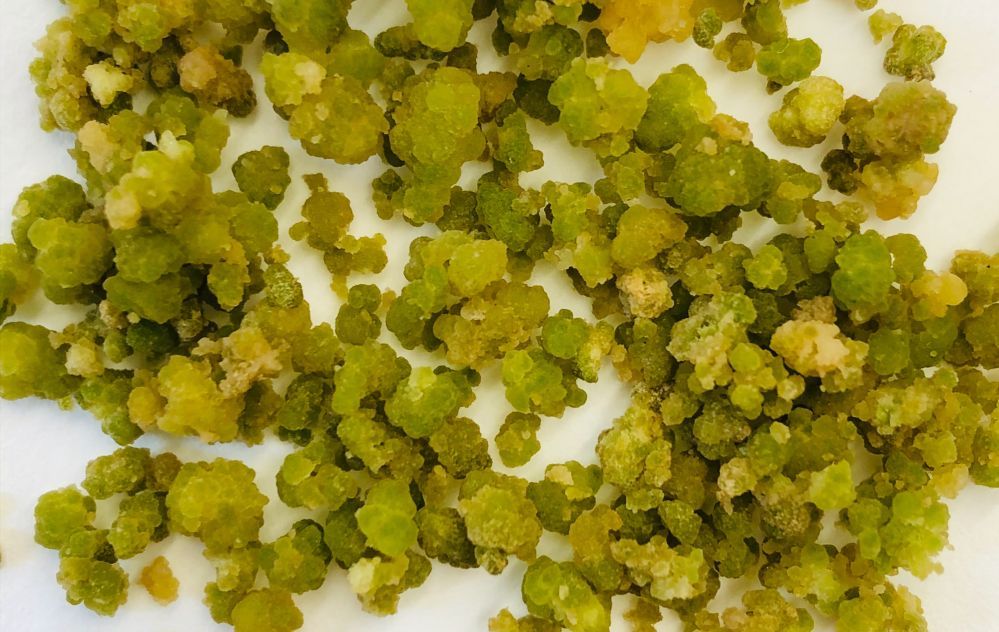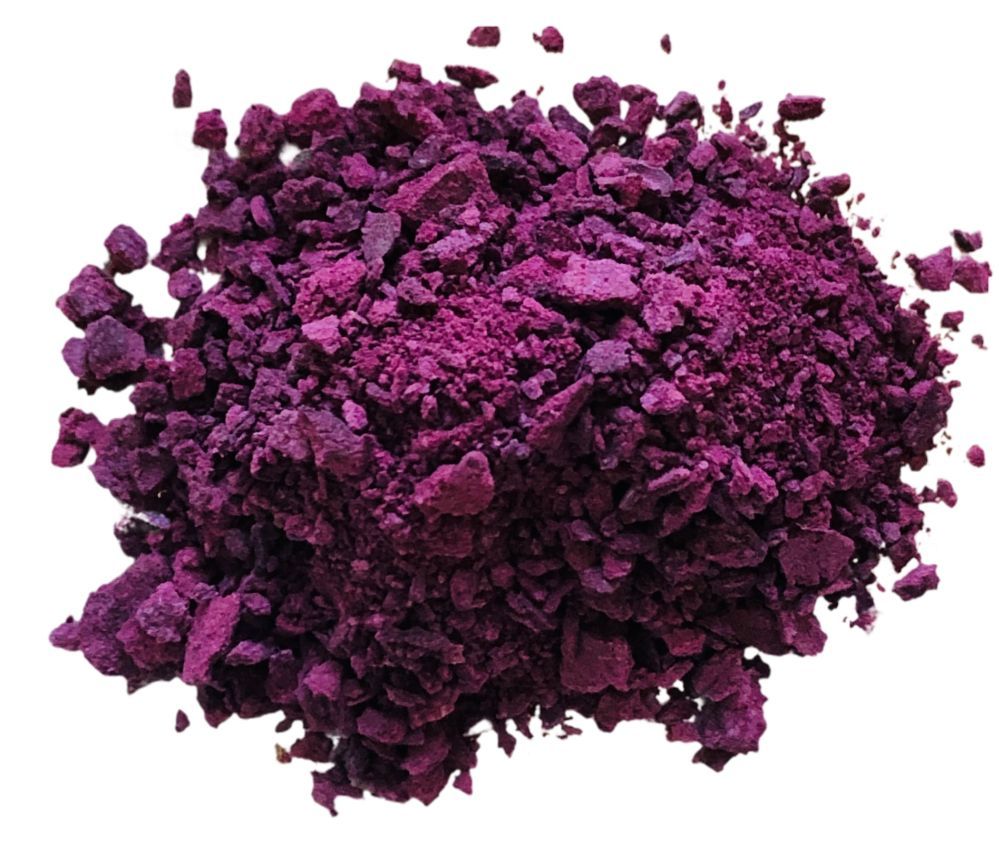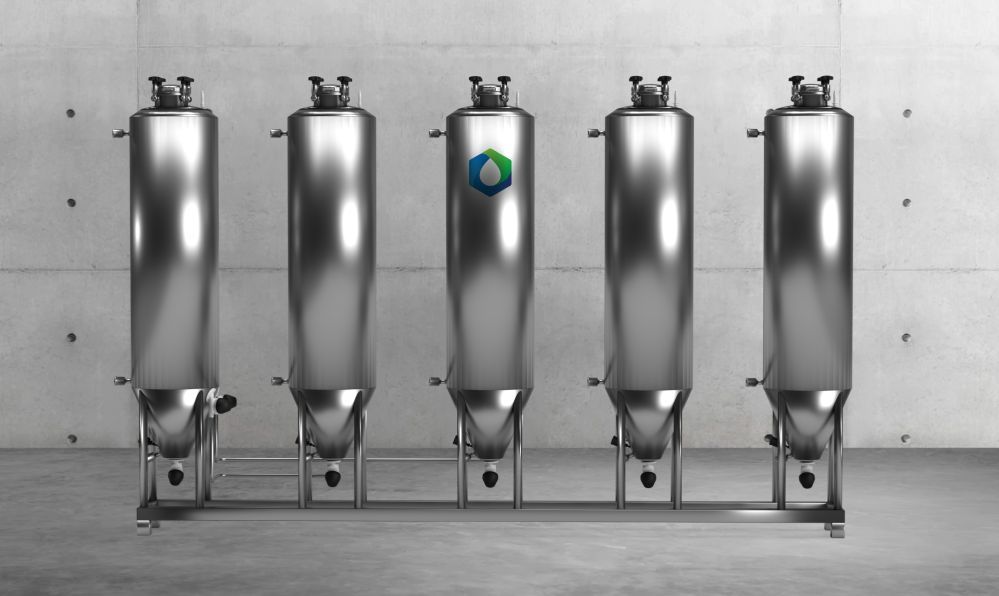Several companies have now proved they can produce individual cannabinoids such as CBG via microbial fermentation. However, producing them in plant cell culture could prove more efficient, says Israeli startup ReaGenics, which claims to have found a novel way to produce “commercially viable” quantities of a broad spectrum of cannabinoids from cannabis plant cells.
Over the past four years, ReaGenics has also developed plant cell culture techniques to grow everything from saffron to coffee, peyote, resveratrol, and anthocyanins from purple maize. It is also using plant cells to grow a potato protein called patatin that is sought-after as a wine-fining agent and has potential applications in meat analogs, says cofounder and CEO Dr. Michael Kagan.
“We’re in talks with an international conglomerate that’s involved with the supply of machinery to the food industry about partnering, and another international company with an interest in plant proteins,” he told AgFunder News (AFN).
As for cannabis, he added: “We recently partnered with a company out of Colorado that manufactures cannabinoid oils. They came to us to say we want to have the means of producing a particular target molecule that has value in the market.
“They said ‘We know how to market it and we already have offtake agreements from potential clients, but we want to use your know-how. You build us a production facility and supply all the genetics, but we’ll run it, and you will get a share of the revenue in the form of royalties.’ But they would own 100% of the factory.”
‘We have a method that produces significant, commercially viable amounts of cannabinoids’
Cannabinoids such as CBD, CBG, THC, CBC and CBN are produced by sticky translucent trichomes on the aerial parts of female cannabis plants; they look a bit like small mushrooms with a stalk and a cap, Kagan explained.
However, cannabis has proved “exceedingly difficult to accomplish via plant cell culture [whereby plant cells are grown in liquid suspension in bioreactors],” he said. “The challenge has been that even when cannabis cells in suspension look like they’re going to form trichome-like organs, they don’t.
“So we came up with another process which allows for the production of a broad spectrum of cannabinoids. I can’t go into more details now as we’re filing a patent, but we have a method that produces significant, commercially viable amounts of cannabinoids.”
Benefits over precision fermentation and controlled environment agriculture
This pesticide-free approach produces cannabinoids with consistent purity and quality without heavy metals (which cannabis plants tend to suck up from the soil) and enables the production of rarer cannabinoids where it is not commercially viable to extract them from plants, he said.
It delivers higher yields of cannabinoids versus genetically engineered microbes in precision fermentation tanks and is viewed more favorably in the natural products industry given that no GMOs are involved, said Kagan. It also has the advantage of producing a broad spectrum of cannabinoids in the same way that a plant does, unlike surrogate microbes, which can only make individual molecules.
“We’re not GMO, we produce broad spectrum, and the concentrations we’re getting are much higher than what you get if you grow cannabinoids inside microbes.”
The economics of growing cannabinoids in plant cell culture also compare favorably to “controlled environment agriculture production of medical GMP quality cannabinoids,” claimed Kagan.
“We come in at about a tenth of the cost. In controlled environment the lighting costs are very high, you still need a lot of water, fertilizer, and labor, and there’s still variance in the crop as even with artificial lighting, some plants are more shaded than others and you only have two or three harvests a year. We can produce in a 12-day cycle all year around.”
While uncertainty over the regulatory status of cannabinoids in foods and supplements has clearly held the market back in the US (“prices obviously went down and some people lost huge amounts of money,” acknowledged Kagan), demand for “high pharma quality cannabinoids is still robust,” he claimed.

Saffron, anthocyanins, potato protein, coffee…
However, cannabinoids are no longer the sole focus of the company, said Kagan, who is working on multiple high-value ingredients from saffron to resveratrol.
As other startups in the emerging space have argued, he said, there’s a sustainability argument for producing multiple high-value botanicals via plant cell culture. Why use all that agricultural land, water and energy to nurture fully-grown plants when you’re only interested in extracting something that might be found in microscopic quantities in mature plants?
Second, plant cell culture can ensure a consistent supply of botanicals with supply chains increasingly threatened by climate change and unpredictable weather, political instability, adulteration, disease, and heavy metals and pesticides from soil.
Third, plant cell culture offers the promise of rapid, consistent, and controlled production of plant compounds regardless of season or location in a sterile environment, with no pesticides, he claimed: “We can become independent of agriculture, independent of seasons, pests, and pesticides.”
“Saffron has been grown for generations in Kashmir, but the lack of rain is causing severe failure of the crops,” noted Kagan. “We take the saffron plant, de-differentiate it, create the stem cells, scale them up in our bioreactors and then dry the biomass into a powder that contains all the components that are valuable to taste and wellbeing such as crocetin and safranal.
“Saffron only grows for three weeks a year and requires significant and experienced labor to harvest. We circumvent all that.”
And finally, he said, by understanding the metabolic pathways in plants that produce certain bioactives and the conditions that drive plants to generate more of them, skilled players in plant cell culture can achieve concentrations that far exceed those produced by plants grown in the wild or via traditional agriculture.

How scalable is plant cell culture?
But how cost effective is plant cell culture?
If your focus is on high value botanicals, it’s potentially very cost effective, claimed Kagan, noting that while firms use pricey hormones to get the cells to de-differentiate from being leaves or stems or flowers back to stem cells, they only need a tiny amount. “Once they are in a stem-cell state they propagate in fairly inexpensive media, unlike cultivated meat.”
He added: “You can grow them in plastic bioreactors, which look like big sausage bags, and we use those up to 50-liter size. But after that we’re using 400-liter stainless steel bioreactors going up to 1,000 liters and eventually we’ll get up to 2,000 liters.
“Stainless steel has initially higher capex, but it doesn’t need replacing and it can easily be decontaminated with steam, whereas plastic bioreactors cannot be sterilized once they have been used, so they are technically single-use and require significant labor and therefore high opex. So in the long term they have a considerably higher capex and leave behind tons of waste plastic that need to be disposed of. Our design is a system which is plug and play, very scalable and fully automated, so it needs very little labor to run.”

How tunable is the plant cell culture process?
But to what extent can the plant cell culture production process be refined to create greater efficiencies?
“It’s a combination of nature and nurture,” said Kagan.
“On the nature side, we look for cultivars with the genetic predisposition to produce what we’re looking for in high quantities.” The next step is determining which part of the fully grown plant to de-differentiate and turn back into a stem-cell-like state so that the cells will proliferate, he said. And it’s not always obvious — the part of the fully-grown plant known to produce a target molecule may not be the best source for plant cell culture.
“We’ve been surprised a number of times to see that the part of the mature plant that produces a target molecule at highest concentration is not necessarily [the part that will produce the highest concentration in plant cell culture].”
On the nurture side, he said, ReaGenics can induce and increase production of target secondary metabolites by stressing the plant or changing growth parameters.
“You don’t have to stress plants to get them to produce primary metabolites, but for secondary metabolites you have to stress the cells to trigger a defense mechanism that will produce a target molecule because they think they’re under attack. There are about 100 different ways to do it, from changing the temperature to flashing lights, adding organic molecules or even vibrations. That’s where the fine tuning comes in, so it’s a lot of trial and error.”
Downstream processing
As for downstream processing, which can be costly for microbial fermentation, in many cases, you can simply harvest the biomass from the plant cell culture bioreactor and dry it, he said. In other cases you will need to extract the target molecule. “For cannabinoids, if you want a combination to create an entourage effect, you might need no downstream processing at all other than de-watering and drying. It’s the same with saffron.”
The business model
Originally, ReaGenics’ business model was to produce biomass in-house as a B2B raw ingredient supplier, said Kagan. “But now we have moved to a licensing model, which allows other people to build the means of production, leaving ReaGenics to work on the biology.”
As for the regulatory pathway for ingredients produced by plant cell culture, he said, “We spoke last week in New York with the FDA, so there [in the US] we would need to go through the GRAS process. But we’re not creating novel ingredients or making GMOs. The molecules we’re making have been around forever, so we were assured that there should be no substantial barriers to regulatory approval, at least in the US.”
Funding
Asked about funding, Kagan said: “We’ve raised $3.3 million in seed funding, and we’re now raising a $6 million low A round, which we’re already a third of the way through, and we’re confident of getting that even in today’s climate. People like the fact that we’re not raising large amounts of money for capex projects; that’s not our business model.”
Further reading:




